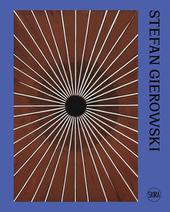
|
Stefan Gierowski
Hardback
Main Details
Description
In paintings from Stefan Gierowski's first, figurative creative stage, one can notice traces of a post-cubist rhythmisation of a form and simplifications borrowed from the naive art. Around 1957, the artist stepped into non-figurative painting, which became his main area of interest. He started painting abstract compositions, in which the intellectual factor, manifesting itself in a clear composition, was dominated by emotions. Already at that time, his paintings included an announcement of the issues related to light, space, and movement, which eventually reigned in his practice. Around 1960, Gierowski's works started demonstrating an inclination towards a geometric structuring of paintings. The artist was gradually discarding the emotional and intimate atmosphere. He started using a more simplified language, narrowed down the colour range, and applied the colour accents on the borders of a canvas. Through colour, Gierowski implies a certain spatial order in his paintings. The colours are arranged into stripes with a different hue and lucidity, which conjures the matter of the space. Lines split the painting into areas, while light connotations carry a tension. In the 1970s, Gierowski organised his canvas compositions exclusively through colour gradients to later counterpose large areas of differently toned colour. In his paintings from the 80s, the emotional impact of colour became prominent, while Gierowski began expressing himself in a more subjective, or even spiritual manner. Skira is publishing his first international monograph in conjunction with the Foundation Stefan Gierowski. The monograph features essays by David Anfam (writer, curator and leading authority on American modern art), Michel Gauthier (curator at Centre Pompidou) and Stach Szablowski (independent curator, art critic and columnist).
|